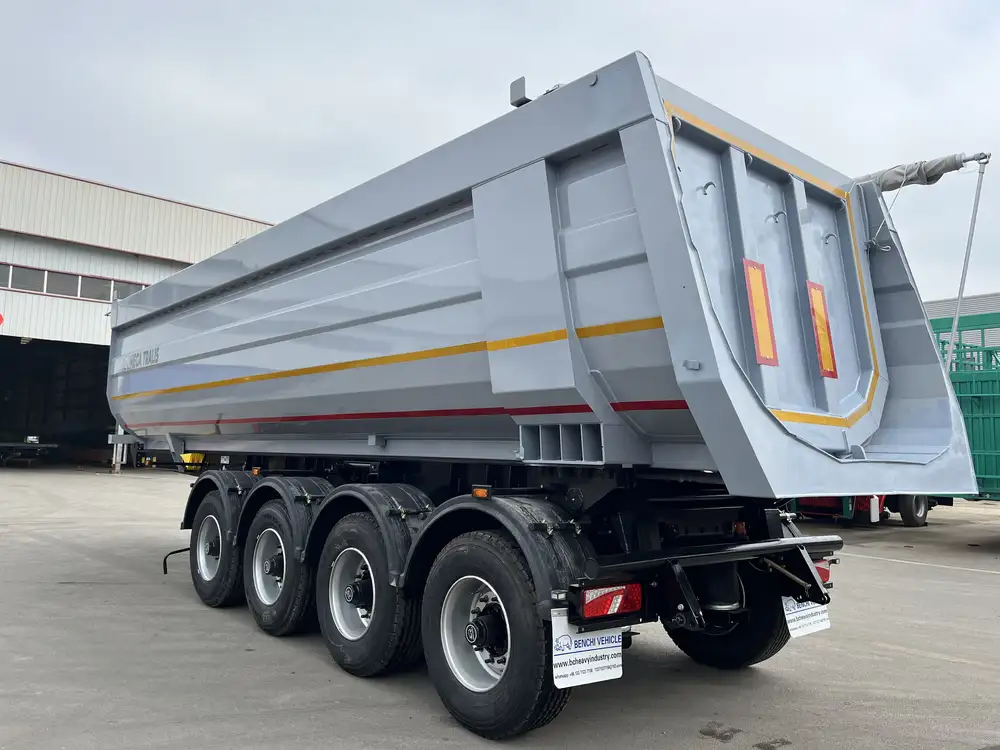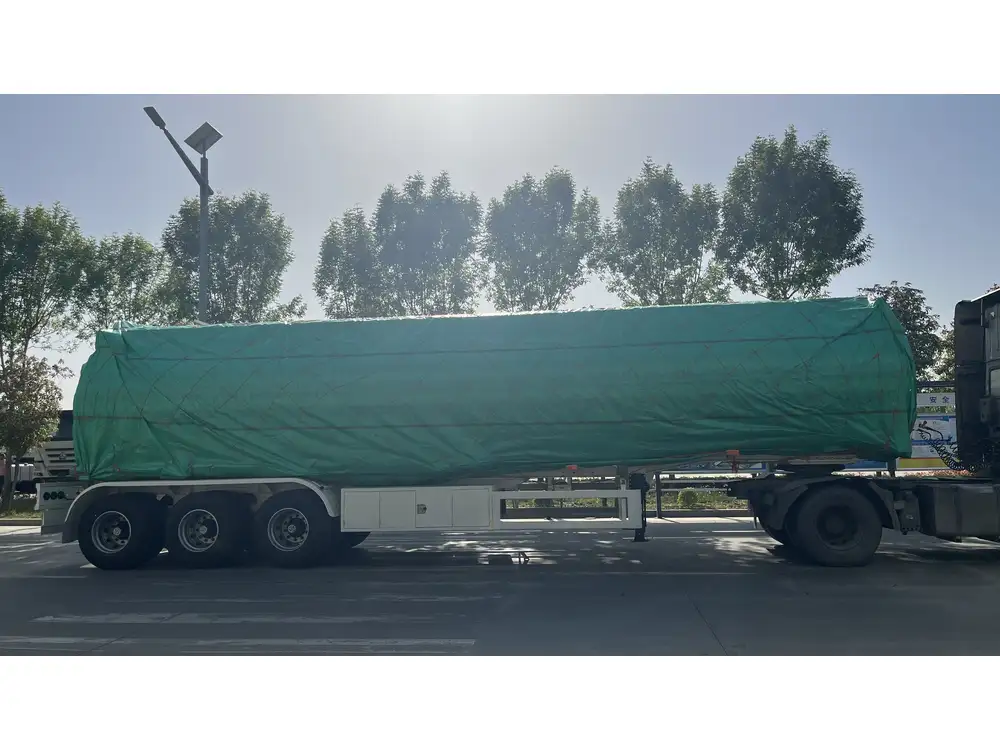Flatbed semi trailers play a pivotal role in the transportation industry, serving as the backbone for hauling a plethora of cargo types. Their design is particularly suited for transporting large, heavy, or oversized items due to their flat surface. However, one crucial dimension that often raises questions among potential buyers and users is the height of these trailers. In this article, we will explore the variable heights of flatbed semi trailers, the factors affecting these dimensions, industry standards, and their implications for transportation safety and efficiency.
What is the Standard Height of a Flatbed Semi Trailer?
The industry standard height for a flatbed semi trailer typically ranges between 36 to 60 inches. This measurement is taken from the ground to the loading surface of the trailer. The most common height for flatbed trailers is approximately 48 inches. However, the exact height can vary based on the trailer’s specifications and the intended use.
| Flatbed Trailer Height | Common Uses |
|---|---|
| 36 inches | Light-duty transport articles, including machinery |
| 48 inches | General freight hauling |
| 53 inches | Large cargo operations including oversized items, flat racks |
How Height Affects Loading and Unloading Operations
The height of a flatbed semitrailer significantly impacts loading and unloading processes. When selecting a trailer, considering how the height interacts with the loading area is essential. Here are some critical factors to consider:

1. Compatibility with Loading Equipment
- Forklifts and Cranes: If your operation primarily utilizes forklifts or cranes for loading, understanding the equipment’s specifications that can accommodate different trailer heights is crucial. Typically, a trailer height that exceeds 48 inches may limit access for certain forklifts.
- Ramps: Some facilities use loading ramps. The height of the trailer will influence the incline required for safe loading and unloading.
2. Efficient Cargo Management
- The height of a trailer influences loading capacity. Taller trailers allow for stacking goods, which can maximize space but may introduce complexity in weight distribution and stability.
3. Safety Considerations
- Higher trailers can increase the risk of accidents if not handled correctly, particularly during loading. Steep ramps can become hazardous, and operators must ensure their loading procedures accommodate the trailer’s height.

Variations in Flatbed Trailer Heights
While the average heights provided earlier offer a general guideline, the specific height of a flatbed trailer may vary significantly based on its design and construction requirements. Here, we will delve into several subclasses of flatbed trailers and their corresponding heights:
1. Standard Flatbed Trailers
- These trailers typically range from 48 to 53 inches in height. They are versatile and widely used across industries for transporting general freight.
2. Step Deck Trailers
- Step deck trailers, also known as drop deck trailers, typically feature a lower deck to accommodate taller loads. Their height usually ranges between 36 to 42 inches at the rear, making them ideal for transporting oversized equipment without exceeding highway clearance regulations.

3. Double Drop Trailers
- Designed for very tall cargo, double-drop trailers feature a well or recessed area that allows for extreme height variances (up to 10 feet or more). The height of the well area dictates the overall height, which can fluctuate widely based on the load.
4. Lowboy Trailers
- Primarily used for transporting heavy machinery, lowboy trailers have a very low deck height of about 18 to 24 inches. Their design is tailored for loads requiring minimal height during transit.
5. Extendable Flatbed Trailers
- These trailers can extend in length but typically maintain a consistent height, close to the standard heights discussed earlier. Their adaptability makes them suitable for specialized freight that may require additional space without affecting height configurations.

Key Regulations and Industry Standards
When dealing with semi trailers, understanding federal and state regulations regarding height restrictions is critical. The Federal Motor Carrier Safety Administration (FMCSA) establishes guidelines that govern the height and load limits for all commercial vehicles, including flatbed trailers.
Overview of Regulations
- Maximum Height: Generally, the maximum legal height for a semi trailer is 13.5 feet (162 inches) from the ground to the top of the load. This does account for the height of the trailer itself.
- State Variations: Various states may have additional restrictions or allowances based on local road conditions and infrastructure, necessitating awareness of regulations in each state traversed.
The Importance of Proper Height Measurement
Accurate height measurement is crucial for several reasons:
- Compliance with Legal Standards: Ensures adherence to federal and state laws regarding vehicle dimensions.
- Enhances Safety: Limits the risk of overhead collisions when transporting cargo under bridges or through tunnels.
- Optimizes Load Distribution: An accurate measurement helps in maintaining balance while minimizing the risk of tipping or rolling.

Measurement Techniques
Here’s how to measure the height of a flatbed semi trailer accurately:
- Flat Surface: Ensure the trailer is parked on a flat and level surface.
- Use a Laser Level or Measuring Tape: Measure from the ground to the top of the trailer deck at its highest point.
- Consider Load Heights: If transporting cargo, measure from the ground to the tallest point of the load to ensure overall height does not exceed maximum allowances.
Factors to Consider When Choosing the Right Height
Several factors should influence your decision when choosing the height of a flatbed semi trailer:
1. Cargo Type and Dimensions
- Understanding the altitude of your typical cargo is essential. Transporting heavy machinery may require a lower trailer, while general freight could comply with standard heights.

2. Loading Dock Specifications
- Assess the loading docks you navigate. If you frequently visit locations with height constraints, opting for a lower trailer may provide a significant operational advantage.
3. Local Climate and Terrain
- Consider potential environmental factors. Excessive rain or snow may necessitate different strategies for load management and height selection based on ground clearance considerations.
4. Vehicle Configuration
- Compatibility with your truck’s specifications is vital. Ensure your tractor and trailer combination maintains a safe height ratio.

5. Regulatory Compliance
- Abide by regional transportation and safety regulations as specified in your area and across the U.S.
Conclusion
In summary, understanding the height of flatbed semi trailers involves a multi-faceted approach that encompasses compliance, safety, and operational efficiency. With a standard height ranging from 36 to 60 inches, various trailer types cater to specific needs in the transportation sector, dictating the best choices based on cargo, loading practices, and overall regulations. As you consider which flatbed semi trailer best suits your needs, remember to assess your unique transportation requirements critically.
By investing the time to understand the consequences of trailer height on your operations, you can enhance efficiency, improve safety, and ensure a smooth loading and hauling process. Whether you are a seasoned transport professional or a newcomer to the industry, this guide aims to equip you with the knowledge necessary for informed decision-making regarding flatbed semi trailer heights.



